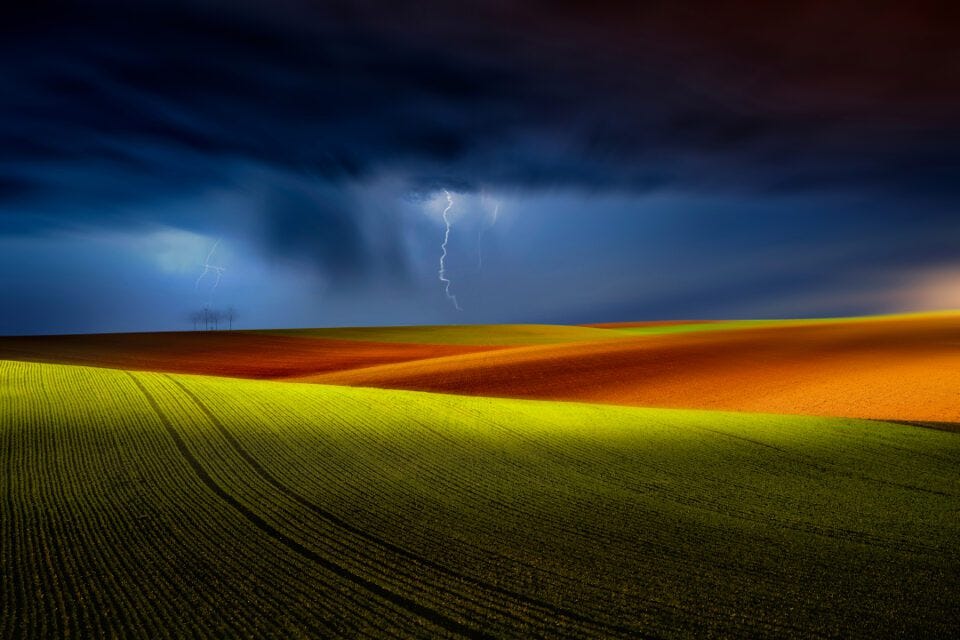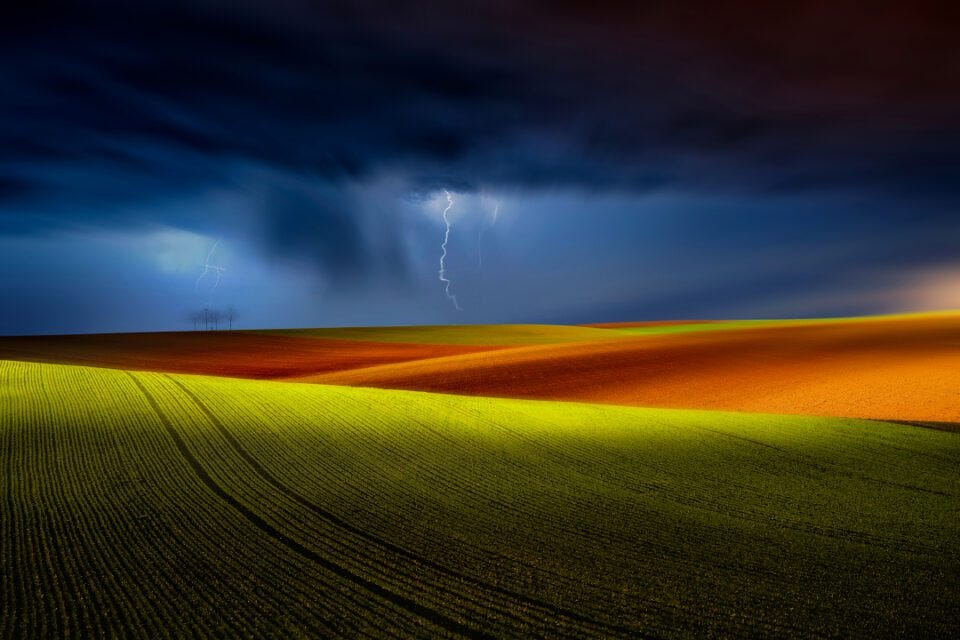Leadership in Chaos: 24th edition.
blind spots, trust, stories.
Hi 👋, welcome back to our 24th edition 🙌.
“We should not try to alter circumstances but to adapt ourselves to them as they really are, just as sailors do. They don’t try to change the winds or the sea but ensure that they are always ready to adapt themselves to conditions. In a flat calm they use the oars; with a following breeze they hoist full sail; in a head wind they shorten sail or heave to. Adapt yourself to circumstances in the same way.”
Greek philosopher Bion of Borysthenes

Leadership: blind spots.
We’re all familiar with blind spots. Probably more the metaphor, than the actual visual phenomenon. On the latter though, we all do have a hole in our visual field. It’s where the optic nerve enters the eye. This ‘missing vision’ is the place where fibres pass through the retina (you can find your own one). It means we’re always missing something, and unaware it’s missing. Right now, there’s a gap in your vision—you just can’t see it. Because in order to see, there’ll always be something we can’t see. In general, we talk of blind spots as a strategic or cultural weakness. But it can also be a strength. Knowing that everyone has them, and acting accordingly, helps us understand that only collectively can we see everything fully.
A thought for leaders: Knowing that alone we can never see everything, should force us to consistently ask ourselves “what am I not seeing”. How often do you ask that? And how often do you challenge teams with the same question. Being more conscious of our own blind spots, gives us ‘cognitive humility’. We know that we also, don’t know. We all see from our own perspectives, with our own blind spots. To see more, we need to see together.

Change: trust.
Although we hear the word trust all the time (it’s allegedly in crisis), it’s often misunderstood. In her audio book, How to Trust and Be Trusted, Rachel Botsman thinks about, and defines it, in interesting ways. Here she is speaking on the currency of trust. Rather than knowing what to expect (how trust is often described), she describes it as a confident relationship with the unknown. Trust is a bridge that crosses the divide between the known, and the unknown. She also makes the point that trust is contextual. Asking someone whether they trust Amazon, is in some ways, a silly question. Trust them to do what? I may not trust them to treat their staff well, but probably do trust them to deliver my goods on time.
A thought for leaders: Leaders often have to manage trust. Whether it’s trust in their own leadership, or public trust in their business or brand. Often though, it’s considered too generally. Rachel makes a powerful point. It’s more useful to think about trust contextually. I may not like Ryanair, but I do trust them to be cheap, and on time. Because trust is built on the promises you can and do keep. And it’s these kept promises, that help us to have a more confident relationship with the unknown.

Culture: stories.
We are story creatures. Our world views, identities and cultures, are made of stories. Stories make sense of our world. They organise information. They connect us to something beyond ourselves. They work, because they trigger oxytocin, the “trust hormone”, and dopamine, which enhances memory and motivation. They also foster neural coupling, which aligns the storyteller’s brain with the audiences. At a time of great disruption and chaos, the WEF recognise that stories have never been more important. Consumers, weary of info and choice, want stories to cut through the noise. Employees, navigating great change, want stories to inspire them and give them purpose. And shareholders want business strategy brought to life, to foster confidence.
A thought for leaders: It’s easy to get caught up in numbers, facts and details. To focus on efficiency and performance. It’s all important. But as the great neuroscientist Antonio Damasio wrote “we are not thinking machines that feel, we are feeling machines that think”. Stories and emotions keep the human species together. Never forget how important they are for a person, a team, a business, and a brand. What stories are you telling? And what information can be turned into a story?

Podcast: EP 3: Communicating In Chaos – Shape the Story
This edition features one of our Leadership in Chaos podcast episodes from the vaults: EP 3: Communicating In Chaos – Shape the Story to complement our Storytelling segment. You can listen to it here.
Enjoy revisiting or newly discovering it 😊
You can follow Flow Group on Linkedin here.
Hope you enjoyed and please share your thoughts in the comments section below.
P.S. This month’s featured work is by Czech photographer Zdeněk Vošický. Born in the Bohemian-Moravian Highlands, an area of stunning natural beauty, his parents were both pilots of sport aeroplanes. “Thanks to the close relationship I have with flying, I started capturing aerial photographs. In those days, before the arrival of drones, this was a completely different type of adventure. I would sit in the open doorway of the plane, so I experienced many dramatic conditions over almost 20 years, as well as so much beauty and adventure.” The minimalist images are often the product of patience and repeatedly returning to the same site.

